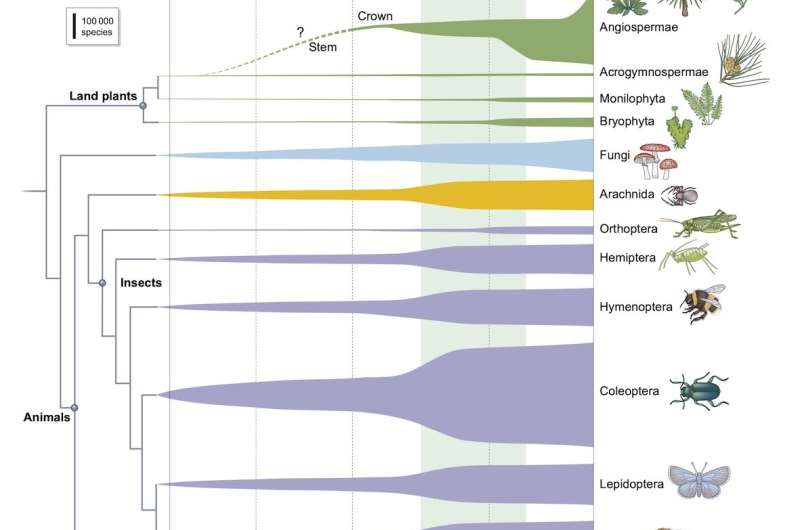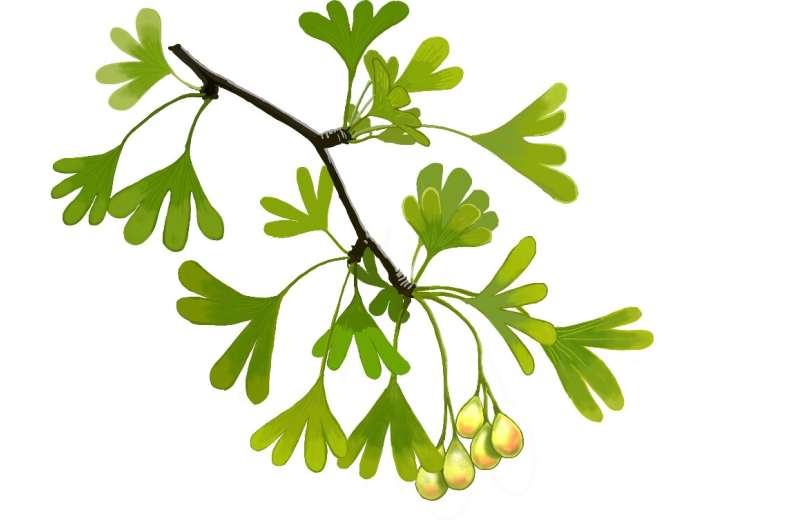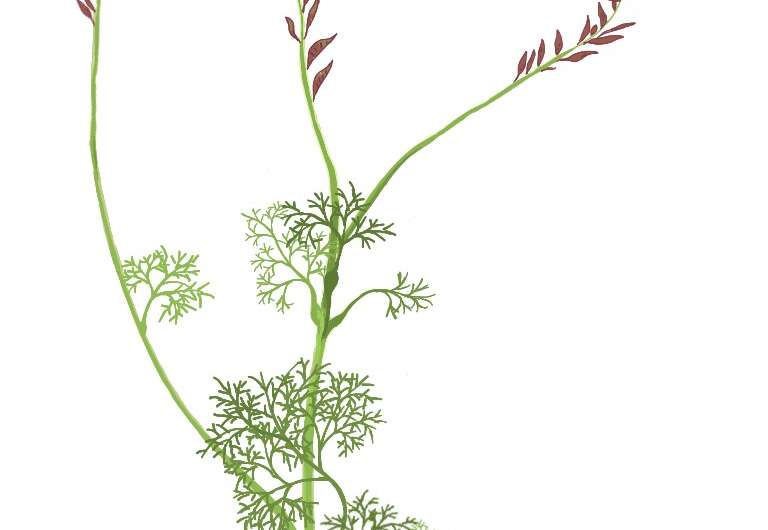The impact of flowering plants on the evolution of life on Earth

Researchers at the University of Bristol have identified the huge impact of flowering plants on the evolution of life on Earth
Flowering plants today include most of the plants humans eat or drink, such as grains, fruits and vegetables, and they build many familiar landscapes such as wetlands, meadows, and forests. From 100 to 50 million years ago, the flowering plants dramatically boosted Earth's biodiversity and rebuilt entire ecosystems.
Paleontologist Prof Michael J. Benton from Bristol's School of Earth Sciences teamed up with Prof Peter Wilf, a palaeobotanist from Pennsylvania State University, U.S., and Dr. Hervé Sauquet, an expert on flower evolution from the Royal Botanic Garden Sydney, Australia.
In their new paper, the team reviewed the way in which angiosperms rebuilt forests and other habitats on land, and how this contributed to modern biodiversity.
"Flowering plants might have been around for some time, but they began to appear more commonly in the Cretaceous, in the last 70 million years of the age of dinosaurs," said Prof Benton. "But it seems that dinosaurs didn't choose to eat them, and continued chomping ferns and conifers such as pines. However, it was only after the dinosaurs had gone that angiosperms really took off on evolutionary terms."

"The Angiosperm Terrestrial Revolution, as we call it, marked a huge change in ecosystems and biodiversity on land," said Prof Wilf. "More than a million species of modern insects owe their livelihoods to angiosperms, as pollinators such as bees and wasps, as leaf-eaters such as beetles, locusts and bugs, or feeding on nectar such as butterflies. And these insects are eaten by spiders, lizards, birds and mammals. After the dinosaur extinction, the great tropical rainforests began to flourish, and angiosperms began to dominate life on land."
"Angiosperms owe their success to a whole series of special features," said Dr. Sauquet. "Biology students all know that the angiosperm flower was an amazing innovation, with special colors and adaptations to make sure particular insects pollinate them successfully. But angiosperms also drive the evolution of the animals that pollinate them, mainly insects, and they can build complex forest structures which are homes to thousands of species. They can also capture much more of the Sun's energy than conifers and their relatives, and this extra energy passes through the whole ecosystem."
Prof Wilf explained: "Although angiosperms first appeared and then became very diverse during the age of dinosaurs, it was only after dinosaurs disappeared 66 million years ago that flowering plants really made big changes and restructured the world's ecosystems.
"It is even possible that the removal of the dinosaurs and their constant trampling and disturbance was the trigger for these events. Today, two-thirds of all species of plants and animals live in rainforests."

"A typical angiosperm-dominated rainforest may contain hundreds of species of flowering plants, as well as hundreds of species of other plants like ferns and mosses, and thousands of species of fungi, insects, spiders, amphibians, reptiles, birds and mammals," added Dr. Sauquet. "On the other hand, conifer forests, based around the pine family, for example, contain fewer species of other plants or animals, and they probably were never as species-rich."
"The big change happened in the Cretaceous, when angiosperms with their amazing flowers gradually took over, step by step," continued Prof Benton. "Cretaceous forests and open spaces probably contained far fewer species. So, when the dinosaurs died out, modern groups of animals could fill their places, but it seems they did much more than just replace them like-for-like. The angiosperms became hugely diverse themselves, but they also created enormous numbers of niches for other plants and animals, so you get tens more species on each hectare of the Earth's surface than you would if angiosperms had not become established when they did."Dinosaur-age fossils provide new insights into origin of flowering plants
More information: Michael J. Benton et al, The Angiosperm Terrestrial Revolution and the origins of modern biodiversity, New Phytologist (2021). DOI: 10.1111/nph.1782
Journal information: New Phytologist
Provided by University of Bristol
No comments:
Post a Comment